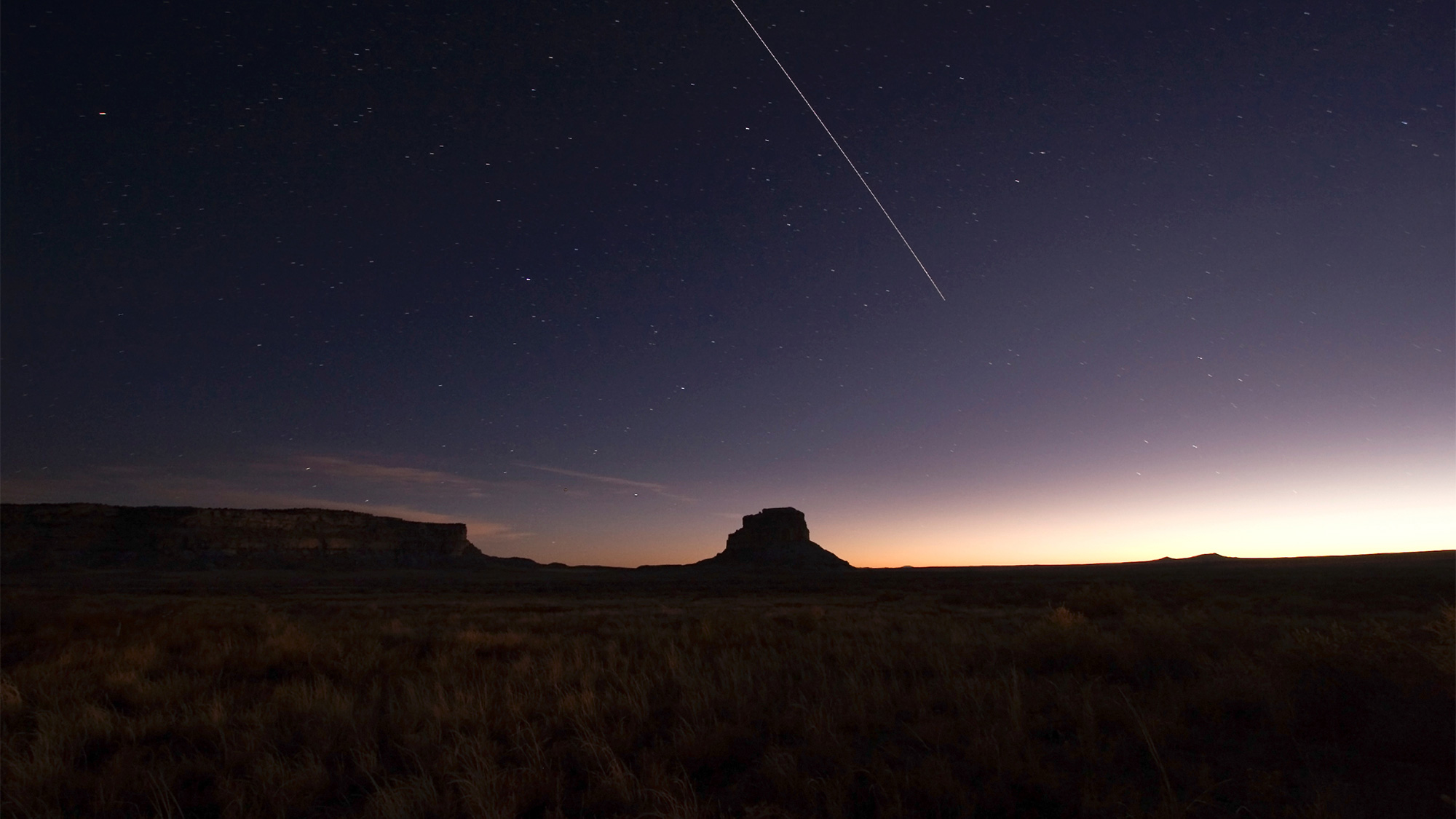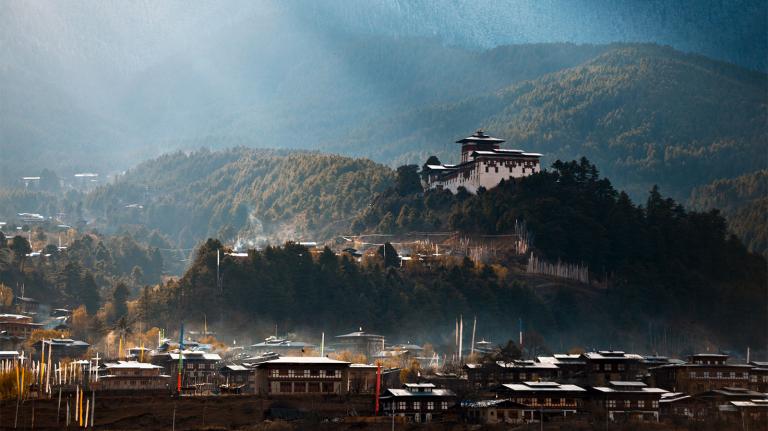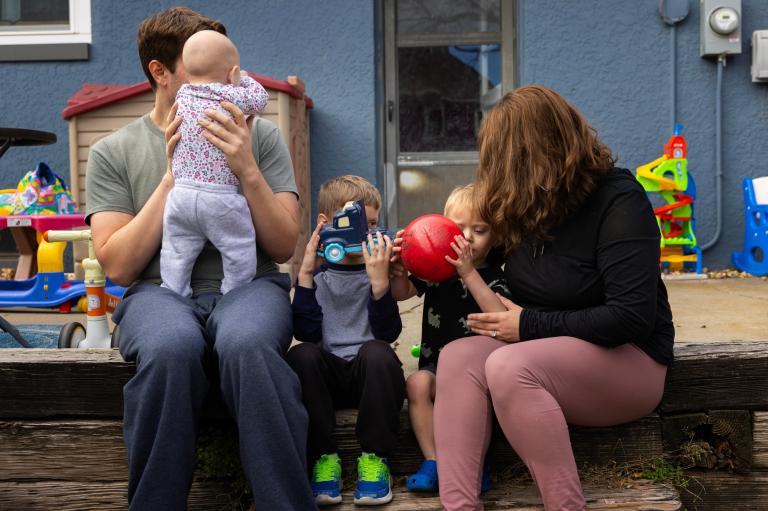This article has been updated.
The COVID-19 pandemic has overwhelmed tribal communities in New Mexico, where Native Americans comprise about 11 percent of the state’s population but a staggering 56 percent of its recorded COVID-19 cases. Last week the Navajo Nation, whose territory stretches across northern Arizona, Utah, and New Mexico, recorded the highest number of coronavirus cases per capita in the country, surpassing New York and New Jersey.
It is against this backdrop that the U.S. Department of the Interior’s Bureau of Land Management (BLM) just moved forward with its decision to hold a series of meetings to gather public input on a controversial oil and gas drilling plan for the Greater Chaco Region, a culturally and spiritually significant area for the Pueblo and Navajo peoples of northwestern New Mexico. Of course, the ongoing pandemic means that the meetings were held virtually — but because less than half of rural tribal households have fixed broadband access, critics say that these meetings were “public” in name only.
The meetings were intended to allow the public to give feedback on a proposed amendment to the region’s land use plan, which will update guidelines on how the BLM manages oil and gas development (such as fracking leases) on public land, as well as lands on which the Bureau of Indian Affairs (BIA) has authority to issue leases. The plan could ultimately add more than 3,000 new oil and gas wells to the area. Air quality monitoring has already found unusually high and hazardous levels of particulate matter pollution in one of the affected counties — the exact kind of pollution that has recently been linked to COVID-19 deaths, and may be exacerbated by new drilling.
Local tribes were heavily involved in the public input process until the novel coronavirus hit. Now they say that it’s shortsighted and reckless for the agency to plow ahead with the comment period. On Friday, during the second of the BLM’s five virtual public meetings, Richard Smith Sr., the tribal historic preservation officer for the Pueblo of Laguna, told the agency that the pueblo’s leadership couldn’t attend any of the meetings because it remains laser-focused on addressing the urgent health and safety needs of its community during the COVID-19 pandemic. In March the tribe requested that the BLM extend the deadline for the public comment period — and the situation has only grown more dire since then, Smith said.
“It is simply unconscionable to continue with the current schedule … and on behalf of the Pueblo of Laguna I urge you to immediately halt the current schedule and work with tribes and other stakeholders on developing a feasible timeline,” said Smith Sr.
Known as the Farmington Mancos-Gallup Draft Resource Management Plan Amendment (RMPA) and Environmental Impact Statement, the draft land use plan was publicly released for a 90-day public comment period on February 28. Depending on which version of the plan is ultimately adopted, the BLM projects that there could be as many as 3,101 new oil and gas wells within the planning area. A broad coalition of tribal leaders, environmental groups, conservationists, and politicians — including U.S. Senator Tom Udall and the entire New Mexico congressional delegation — have urged the BLM and BIA to postpone the public comment period, which is currently set to expire at the end of this month. (Update: After publication of this article, the BLM announced that it would extend the comment period through September 25.)
“The Greater Chaco Canyon Region is a sacred landscape that we owe a duty to protect. We take that duty seriously,” said J. Michael Chavarria, governor of the Santa Clara Pueblo and chairman of the All Pueblo Council of Governors, during a recent press call with other tribal, state, and federal leaders. He noted that the council, which represents the 20 governors of the sovereign Pueblo nations of New Mexico and Texas, was shocked and dismayed that federal agencies decided to move forward with the meetings in the midst of the pandemic. The last of the five meetings concluded on Monday morning.
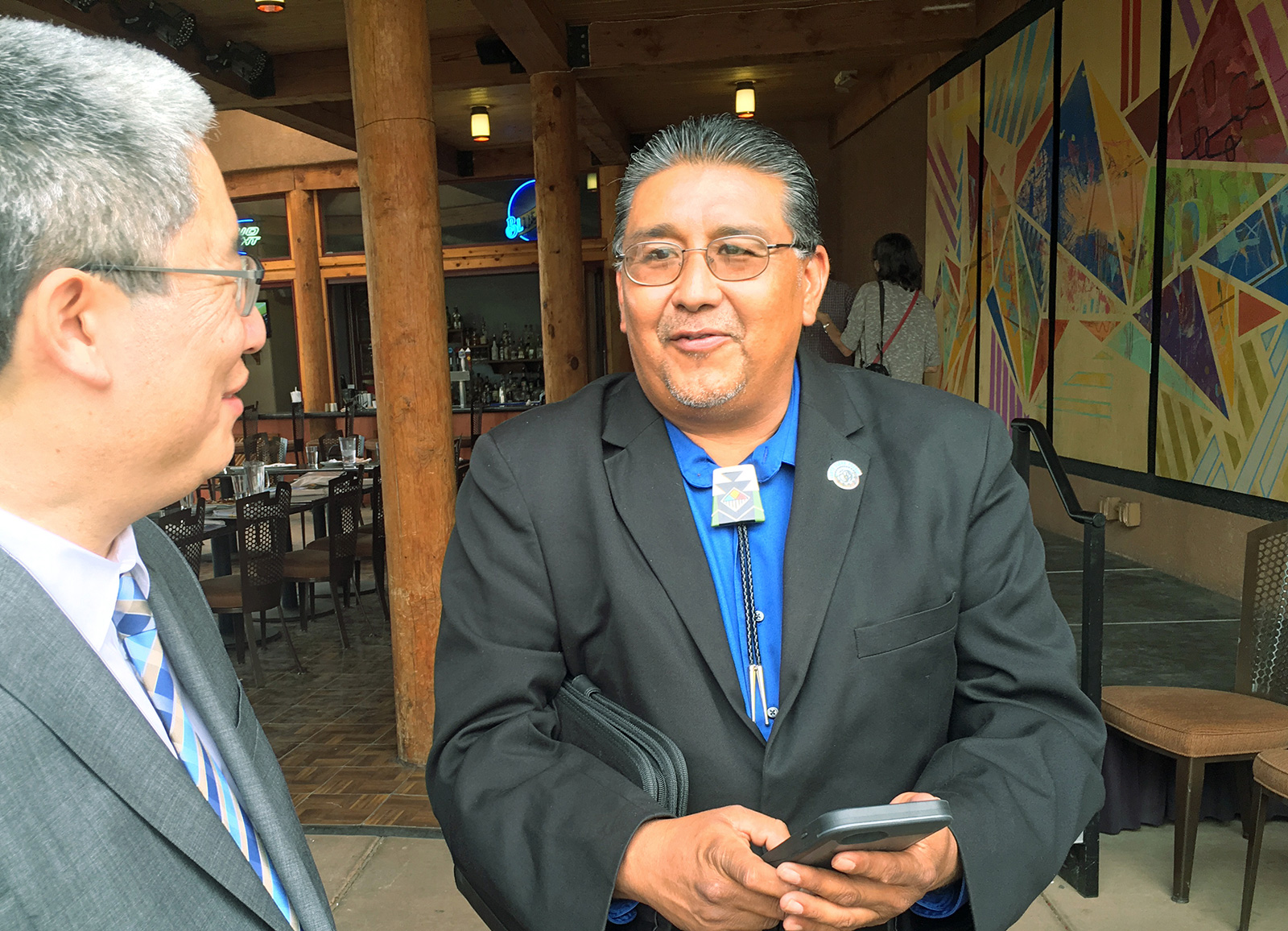
Santa Clara Pueblo Gov. J. Michael Chavarria, right, during a forum at the Indian Pueblo Cultural Center in Albuquerque, N.M., on Sept. 20, 2016. AP Photo / Russell Contreras
“Some of our pueblos have been hit hard by the virus and we cannot participate in meaningful consultation, even though it’s a virtual RMPA meeting,” said Chavarria.
The BLM began the amendment process in 2014 to update its current plan, and it pledged to address tribal concerns such as air quality, climate change, and environmental justice. The Greater Chaco Coalition, which represents more than 200 tribal, environmental, and community groups working to protect the region from further drilling, says that the draft plan shows that the agency has not followed through on these promises — and instead will facilitate more fracking. (The BLM did not respond to Grist’s request for comment.) Once approved, the plan will determine how land in the region is managed for the next 10 to 15 years.
Considered the cultural heart of the American Southwest, the Greater Chaco Region is home to ancient Puebloan ruins, including Chaco Canyon, where Chacoans built complex, multi-story buildings and flourished more than a millennium ago. While the canyon itself — which is now part of the Chaco Culture National Historical Park and a UNESCO World Heritage Site — is protected from drilling, the surrounding region within the San Juan Basin is not permanently protected.
The basin’s Mancos Shale rock formation is a major reservoir of natural gas and oil that has attracted industry attention in the past decade as new technologies emerged for horizontal drilling and hydraulic fracturing, or fracking. If the BLM doesn’t extend the public comment period, then it’s clear the federal agencies are intent on fast-tracking oil and gas development despite community opposition, according to Paul F. Reed, a preservation archaeologist and Chaco scholar with Archaeology Southwest, a conservation-focused nonprofit based in Tucson, Arizona.
“With the price of oil way down currently because of the crisis, there’s absolutely no reason to rush this planning process and thrust a hasty decision on New Mexicans that puts thousands and thousands of historic, sacred sites at risk as well as the folks living now at ground zero,” said Reed during the public comment portion of the BLM’s virtual meeting on Friday.
In court over the last five years, tribal, environmental, and legal organizations have successfully challenged the BLM’s approval of fracking and oil and gas drilling in the Greater Chaco Region, citing the agency’s failure to address the cumulative impacts of fracking on human health, the environment, and the cultural landscape. The agency has already leased more than 90 percent of federally managed land in the basin for drilling, including areas that intersect historic Chacoan roads and villages. But now those organizations say that long-protected areas are newly at risk for drilling. This comes as the Trump administration has dramatically increased drilling leases on public lands across the American West and the Gulf of Mexico.
“Part of the problem is that this [public input process] is now taking place in the context of an unprecedented health pandemic,” said attorney Kyle J. Tisdel, the climate and energy program director at the Western Environmental Law Center, which has taken the BLM to court over the cumulative effects of drilling since 2015. “That pandemic obviously has also an outsized impact on the Navajo Nation.”
Daniel E. Tso, who represents eight local government subdivisions, or chapters, within the Navajo Nation Council, the nation’s governing body, said in a letter to BLM officials last month that the leasing of land parcels for new oil well development throughout New Mexico’s tribal communities has worsened air pollution. This has weakened the respiratory health of residents, he wrote, making them more vulnerable to severe cases of COVID-19. One chapter, Counselor, has seen particularly heavy development by the oil and gas industry, and its neighboring chapters of Ojo Encino and Torreón-Starlake could experience an increase in oil lease sales if the new land use plan goes into effect.
For residents in these rural areas, there’s no escaping the presence of the oil industry, according to Tso, who noted during the recent press call that residents who travel long distances for medical treatments such as dialysis must share the road with heavy industry-related traffic. Given residents’ concerns around increased air pollution, it’s crucial that the comment period be delayed, Tso said during the press call.
“Nature has no boundaries, air has no boundaries. We are all connected in this aspect,” said Tso. “The greater Chaco area really needs to be saved for the future.”
Despite their concerns about the prospect of increased drilling, these Navajo communities were largely excluded from the BLM’s virtual public meetings because they either don’t have reliable high-speed internet access or lack it altogether, according to Tso. A 2019 Federal Communications Commission report found that less than half of households (46.6 percent) on rural tribal lands have access to fixed broadband service. Beyond the technological hurdles, many residents primarily speak Navajo, so virtual meetings conducted by the BLM in English present an added obstacle, said Tisdel of the Western Environmental Law Center.
“The notion that they’re going to just hold these public events and put them on Zoom calls is really problematic because that is not how Navajo communities engage in dialogue or communication,” he said.
Federal agencies are required by law to engage the public via robust outreach. If residents can’t meaningfully participate, then the agencies aren’t fulfilling that statutory obligation, noted Tisdel. The National Environmental Policy Act (NEPA) of 1970 requires that federal agencies assess the environmental effects of proposed actions such as federal infrastructure projects, while the Federal Land Policy and Management Act of 1976 has requirements to ensure public participation.
“The point of NEPA and the reason you have the comment period is to allow the public to engage and allow those comments to help shape the decision-making process — to help shape the ultimate choices that are made,” said Tisdel. “The key community is not going to have an opportunity, at least at this point, to be able to shape what that decision looks like.”
Though the BLM did not respond to Grist’s request for comment, the agency’s state director for New Mexico, Tim Spisak, used Friday’s virtual public meeting to acknowledge community pushback and defend the agency’s decision to move forward.
“We understand that these conversations are often preferred to be done in person, but right now it is critical that we do our part to keep the American public and BLM and BIA employees healthy and safe,” said Spisak. “It is also important though that we maintain a capable and functioning government to the greatest extent possible during the COVID-19 outbreak.”
Rebecca Sobel, a senior climate and energy campaigner with the environmental conservation nonprofit WildEarth Guardians, said during the same meeting that she would have preferred to cede her comment time to a local community member, person of color, or elder. But that’s not possible in a virtual forum, without face-to-face engagement where she could easily see all the attendees, she told the BLM.
“These meetings were pretty broadly and uniformly called out for their racism and inequitable access for participation,” said Sobel. She then proceeded to blast Twisted Sister’s hit 1984 song “We’re Not Gonna Take It,” which kicked off the public comment portion of the meeting on a raucous note.
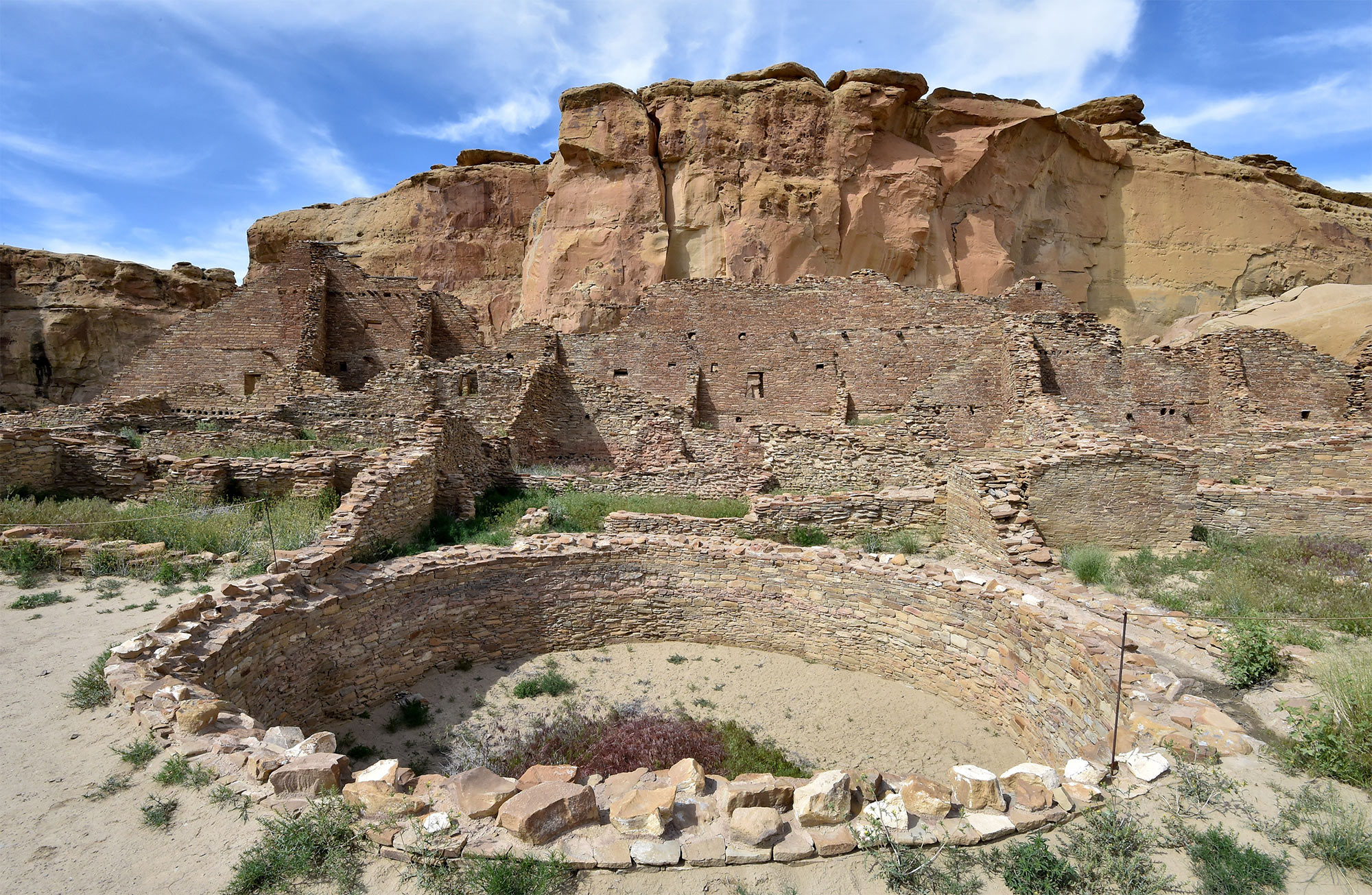
The ruins of Pueblo Bonito house at Chaco Culture National Historical Park on May 20, 2015. Mladen Antonov / AFP via Getty Images
Compromised by Exposure
Earlier this spring, Harvard’s school of public health released a study that found a connection between elevated COVID-19 death rates and air pollution, specifically elevated levels of the particulate matter known as PM 2.5. The research, while not yet peer-reviewed, does suggest that people in counties with higher levels of PM 2.5 are more likely to die from the new coronavirus. This is a major concern for Navajo community leaders who have been studying the health effects of pollution connected to oil drilling in the Navajo chapter of Counselor in New Mexico’s Sandoval County, as well as the surrounding area.
The San Juan Basin, which has more than 300 oil fields and 40,000 drilled wells, encompasses the New Mexico counties of San Juan, McKinley, Rio Arriba, and Sandoval, all of which have land that will be assessed for additional drilling as part of the resource management plan. All of those counties, with the exception of Rio Arriba, are facing COVID-19 outbreaks, according to Senator Udall.
Five years ago, after residents began voicing concerns about unusual respiratory and health symptoms, the Counselor chapter submitted a resolution to the Navajo Nation calling for a moratorium on oil drilling. The chapter also undertook a health impact assessment to examine how oil and gas drilling is affecting residents in the Greater Chaco Region. One part of the assessment focused on air monitoring in Counselor, a rural community of about 700 residents that is part of a tri-county area (that also includes the chapters of Ojo Encino and Torreon) where there’s been a marked increase in fracking.
Community members formed the Counselor Health Impact Assessment Committee, which collected air monitoring data in 2018. The results were analyzed by the Southwest Pennsylvania Environmental Health Project, a nonprofit public health organization that assists communities impacted by oil and gas development. The outdoor measurements show that Counselor has higher-than-average levels of PM 2.5 compared to similar communities across the country — communities that are also near oil and gas drilling.
The air monitors also measured hazardous spikes of PM 2.5 in the air outside homes and well pads. All of this was concerning before COVID-19 struck, given that residents who live near a source of air pollution are at greater risk for developing or worsening respiratory or cardiovascular diseases. But the recent Harvard findings clarified just how dangerous even small increases in exposure to this type of fine particulate matter could be for residents with any kind of respiratory illness during the COVID-19 pandemic, said Teresa Seamster, who co-authored the 2019 assessment and is a volunteer researcher and member of the Counselor Health Committee.
“This is why in the Navajo Nation so many people are getting seriously ill,” said Seamster. “If you’re exposed to oil and gas emissions, it could be very serious for you because you’re compromised.”
Protecting a history
U.S. Interior Secretary David Bernhardt visited Chaco Culture National Historical Park last year. Afterward he implemented a one-year deferral on oil leasing in a 10-mile buffer zone around the park. That was supposed to give the BLM time to work on the resource management plan and also give Congress the time to vote on a bill that would permanently protect federal land within that zone from future oil and gas leasing. Now, that time is running out: The deferral is set to expire this month.
Among U.S. parks, Chaco Canyon is among the most threatened by oil and gas development, according to a National Parks Conservation Association (NPCA) report. For tribal leaders, Chaco scholars, and environmental conservationists, protecting the region surrounding the park is a top priority because it is part of the cultural and spiritual landscape for the area’s tribes. The region is a vital part of the present identity of residents of Laguna Pueblo, who interact with the land through song, prayer, and pilgrimage, said Smith Sr.
“Now more than ever, connections to our pueblo identities are a source of strength in difficult times,” he said during Friday’s BLM meeting. “We must ensure that these connections will not be irreparably severed, but maintained intact for future generations that will surely follow this crisis.”
The NPCA, which has also urged the Department of Interior to pause the public input process during the pandemic, notes in its report that oil and gas development has resulted in pollution from flares, leaking infrastructure, and “rampant” methane waste — particularly in the San Juan Basin, which has created a 2,500-square-mile methane cloud over the Four Corners region, including the area around Chaco Park.
“This plan to further industrialize these areas immediately surrounding the park with more drilling risks further scarring the landscape and destroying archeological sites, while the increase in carbon emissions will affect local air quality and the climate,” said Emily Wolf, New Mexico program coordinator at NPCA, in a statement to Grist.
Preserving archaeological sites requires a regional approach that preserves landscapes so that Pueblo communities don’t lose cultural and spiritual connections, said Reed — for example, when a historic corridor is breached by a pipeline or a power line. This means not just preserving individual sites, but also protecting the broader landscape from oil and gas development.
“The sites become these islands of protected bits of history and important spiritual landscapes for tribal folks, but then we get infill all around it with the industrial landscape, so the character, the feeling, and some of the other spiritual and intangible aspects get lost through time,” said Reed.
Improving management of this landscape to maximize protection of these sites requires the input of tribes, but with stay-at-home orders limiting mobility and a broad lack of internet access impeding communication, this is all but impossible, according to tribal, state, and federal leaders who have submitted communiqués to the BLM.
The greater Chaco landscape “is a uniquely special place that we can’t get back once destroyed,” said Senator Udall. “The short extension of this process out of respect and concern for the tribes, pueblos, and communities impacted is imperative.”

